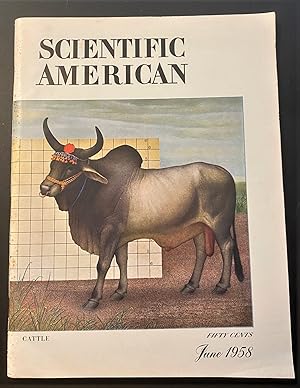Computer Chess Player Scientific American First by Bernstein Alex Michael Roberts (1 results)
Search filters
Product Type
- All Product Types
- Books (1)
- Magazines & Periodicals (No further results match this refinement)
- Comics (No further results match this refinement)
- Sheet Music (No further results match this refinement)
- Art, Prints & Posters (No further results match this refinement)
- Photographs (No further results match this refinement)
- Maps (No further results match this refinement)
- Manuscripts & Paper Collectibles (No further results match this refinement)
Condition Learn more
- New (No further results match this refinement)
- As New, Fine or Near Fine (No further results match this refinement)
- Very Good or Good (1)
- Fair or Poor (No further results match this refinement)
- As Described (No further results match this refinement)
Binding
- All Bindings
- Hardcover (No further results match this refinement)
- Softcover (1)
Collectible Attributes
- First Edition (No further results match this refinement)
- Signed (No further results match this refinement)
- Dust Jacket (No further results match this refinement)
- Seller-Supplied Images (1)
- Not Print on Demand (1)
Language (1)
Price
- Any Price
- Under £ 20 (No further results match this refinement)
- £ 20 to £ 35 (No further results match this refinement)
- Over £ 35
Free Shipping
- Free Shipping to United Kingdom (No further results match this refinement)
Seller Location
Seller Rating
-
"Computer vs. Chess-Player", in "Scientific American". **First computer chess program,**
Published by Scientific American, 1958
Seller: JF Ptak Science Books, Hendersonville, NC, U.S.A.
£ 115.60
Convert currency£ 25.44 shipping from U.S.A. to United KingdomQuantity: 1 available
Add to basketSoft cover. Condition: Very Good. Bernstein, Alex and Michael de V. Roberts. "Computer vs. Chess-Player", in "Scientific American", volume 198, no.6., June 1958. Original wrappers. VG article by Bernstein (who is alsoat least at one pointthe chess-player of the title of the paper) on the first computer chess program (run on an IBM 704). The 704 was fed info following each move, and played well against Bernstein, though the computer was expected to perform only against a novice human player. It was a remarkable achievement for the time. "Bernstein drew upon not only his own experience with chess, but began to study Modern Chess Openings, which came out then every two years, and spent six months going through some five hundred chess openings. He assigned scores to various positions, scores that depended not only on the pieces retained, but also on area control of the board and mobility. He also developed a fourth measure, what he called a "greens area" around the king, meaning that the more squares outward from the king controlled by his own side the better. But after six months of this he gave it up. He couldn't make any sense out of it."--Pamela McCorduck, from "Machines Who Think" Evidently Bernstein was unaware of Claude Shannon's paper on a chess-playing machine that was published in 1950.


